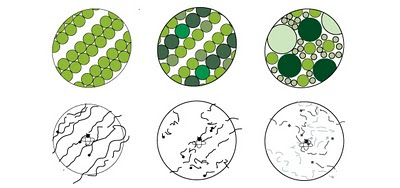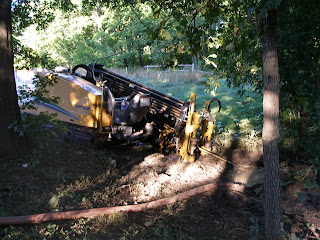Diversity Affecting the Fitness Landscape for Insects, A Complex Adaptive System
In a recent class in Complex Adaptive Systems, I wanted to find a new way to relate the effects of diversity models on insect patterns and the resulting plant benefits. We need high access for efficient harvesting, but that flattens the fitness landscape for insect pests. If we have K (Diversity) too high, the harvest, mechanical or human stresses our fitness. My models here are showing the variations in planting methods that affect the insect fitness for better integrated pest management. The third column K would vary greatly depending on beneficial insect habitat species used in the same pattern. Likely without loss of yield.
The top row represents the patterns used in gardens and a value for K relative to C.
K being the Complexity or Diversity and C being coupling or proximity.
The bottom row shows insect patterns due to the above pattern. Breaks in the continuity add stress and opportunity for predation.
Insect species compete as the fitness landscape becomes rugged.
K being the Complexity or Diversity and C being coupling or proximity.
The bottom row shows insect patterns due to the above pattern. Breaks in the continuity add stress and opportunity for predation.
Insect species compete as the fitness landscape becomes rugged.
Low K (Monoculture) Low K (Interplanted) High K (Diverse Species)
High C (Proximity) Lower C (Intermittent) Low C (Dispersed)

Low K (Flat, Monoculture) Low K (Fractured) High K (Stresser Areas)
High C (Immediate Access) Low C (Less Access) Low C (Fractured Availablity)
Where: Sp = Kp/Ki
K is Diversity (species) Si = Ki/Kp
C is species proximity (coupling)
S is stress p is plant
Y is yield i is insect
____Yp___
Sp = Kp/Ki
Si = Kp/Cp
This is an observation model, not a proven hypothesis tested in a controlled environment.
Dan Halsey
Dan Halsey


Comments